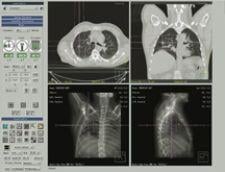
Philips’ exclusive Tumor Localization (Tumor LOC) application allows radiation oncology departments to localize target volumes for radiation therapy planning.
Designed for fast and simple CT tumor volume localization, the application includes exclusive features for viewing Respiratory Correlated CT datasets and analyzing motion of the target and surrounding anatomy.
Previously only available on the Philips Brilliance CT Big Bore console, version 3.5 makes the Tumor LOC application available for purchase on the Extended Brilliance Workspace (EBW) and GEMINI TF PET/CT systems.
All of the best-in-class 4D tools found on the console will now be available on the EBW, reportedly enhancing workflow efficiency and flexibility in the radiotherapy department.


 November 11, 2021
November 11, 2021 







